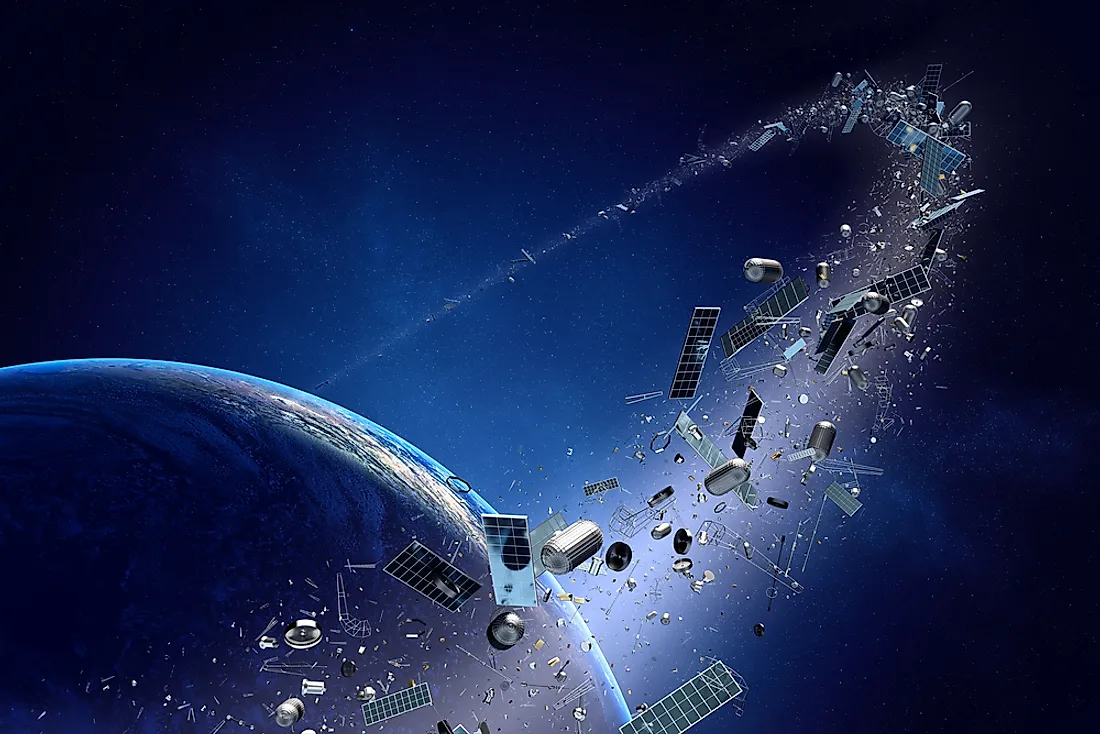How Many Satellites are There in Space?

A satellite is a body that moves around another body that is under study, like the Earth. Some satellites are man-made while others are natural. The artificial satellites are placed in space to revolve and serve a specific purpose. The force of gravity makes the object relevant to the researcher. Though humans has sent thousands of satellites to space, it is observed that close to three-quarters of them have ceased being functional. Nevertheless, humans has been able to better understand the universe and other planets, as well as the moon. This has enabled us to advance in all sectors. Satellites can be grouped into natural and artificial.
The Origin Of Satellites
In October 1957 the Soviet Union pioneered the construction and launching of satellites with Sputnik 1. The satellite was 23 inches in size and made of metal. This progress by the Soviets triggered the US to construct its own first satellite, bearing in mind that the Cold War was at its climax. The US saw the object as a technical instrument for scientific research, political mirage, as well as a false doctrine to defeat the Eastern Block. Later, the US made proposals on how they would launch super bodies to orbit the earth. The president at that time, Mr. Dwight D. Eisenhower, allowed huge resource allocation to this project. Different government departments were assigned different roles to ensure a successful takeoff.
How Many Satellites Are There in Space?
Currently, there are thousands of man-made satellites constructed by many countries around the world in space. By 2013, approximately 3,600 of them were still orbiting the earth, of which half have been launched by the US. The most notable satellites are the International Space Station and the Hubble Space Telescope. Interestingly, there are 13 satellites on Mars, 15 on Venus, and 47 on the moon. Records have it that technological research accounts for the largest number of satellites at 141, followed by navigation with 91. By 2016, Russia had the highest number of satellites at 1,437, followed by the US with 1,099 satellites. Communication satellites account for the highest number at 2,000.
By sorting out the number of satellites according to the distance from the earth, there are three categories, namely, those that orbit very close to the earth, those at the middle about 20,000 kilometers, while the rest are far away from the earth at approximately 36,000 kilometers.
Though close to 25,000 satellites went dormant, close to 1,000 are still active, with an estimated 560 objects relaying relevant and useful information to Earth. Satellites have also been sent to other planets like Mercury, Mars, Venus, and even the moon. Aside than the major satellites which weigh up to 6 tons, there are other much smaller satellites of lesser significance. According to researchers, the smaller satellites are over 21,000 in number and a further 500,000 measure below ten centimeters.
Significance Of Satellites
During the Cold War, these objects were aimed at providing information about other countries, which the military could then use to attack the enemy. Nowadays, however, satellites assist in the understanding of space, the earth, and other planets. They assist travelers in knowing the direction of sea and land, in the charting of ship courses, and routes taken by airplanes. Scientists are also able to monitor climatic conditions and detect any weather changes. Satellites also assist researchers in making distant objects appear nearer and bigger, and therefore easier to study.











